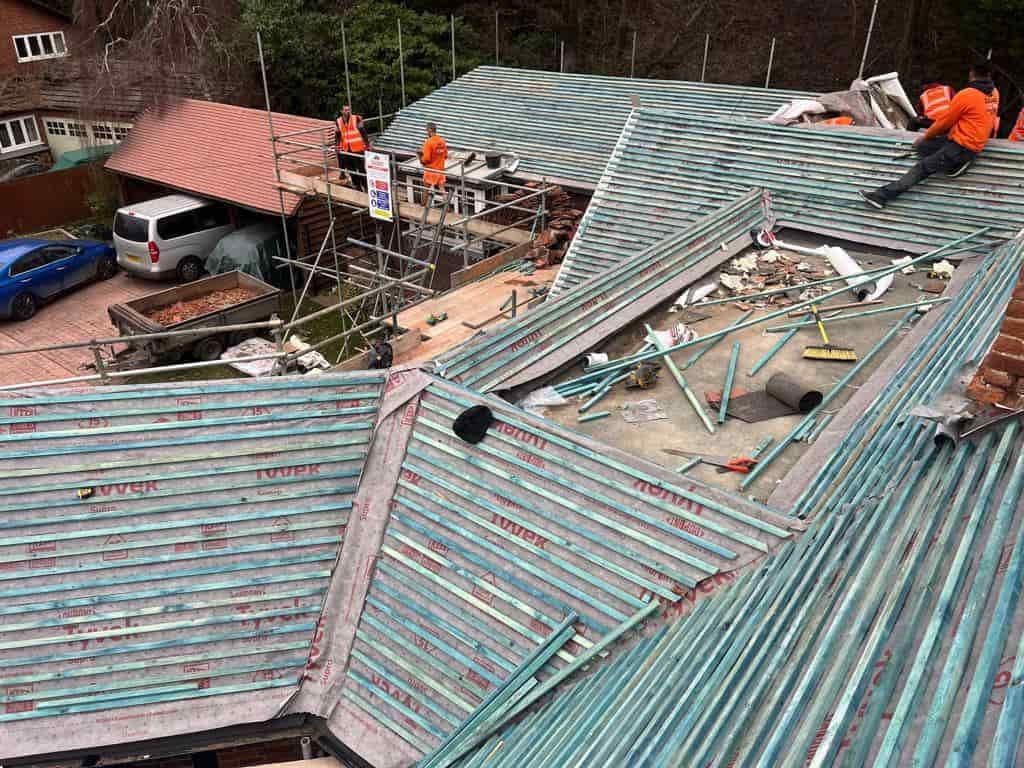The Role of Roof Underlayment in Slipped Tile Protection
Introduction: Your roof is your home’s first line of defence against the elements, and protecting it is crucial to maintain your property’s integrity. Slipped tiles, a common roofing issue, can lead to water damage and structural problems. The roof underlayment is one often-overlooked component that plays a significant role in preventing slipped tiles. In this blog post, we’ll explore the vital role of roof underlayment in protecting against slipped tiles and how LKN Roofing Shortstown can ensure your roof stays secure and resilient.
Understanding Roof Underlayment
Roof underlayment is a barrier installed beneath the visible roofing material, such as shingles or tiles. It serves as an additional protection against moisture infiltration, wind-driven rain, and other environmental factors. There are two primary types of roof underlayment:
1. Asphalt-Saturated Felt (Tar Paper): This traditional underlayment consists of cellulose or fibreglass saturated with asphalt. It is often used in residential roofing and provides basic protection against moisture.
2. Synthetic Underlayment: More modern and advanced, synthetic underlayment is made from polyethene or polypropylene. It offers superior waterproofing and durability compared to traditional felt.
The Role of Roof Underlayment in Slipped Tile Protection
- Moisture Barrier: Roof underlayment acts as a moisture barrier, preventing water from infiltrating your roof’s structure. Underlayment ensures water does not seep into your home’s interior when tiles slip or become damaged. This helps prevent water damage, mould growth, and rot.
- Secondary Defense: If a tile or shingle is dislodged during extreme weather conditions, the underlayment remains intact and protects your roof. It offers a secondary line of defence until the tile can be replaced or reinstalled.
- Enhanced Wind Resistance: Underlayment improves your roof’s resistance to strong winds. It prevents wind-driven rain from penetrating the roof deck, reducing the risk of slipped tiles during storms.
- Added Durability: Synthetic underlayment, in particular, is known for its exceptional durability and longevity. It can withstand UV exposure, temperature fluctuations, and harsh weather conditions better than traditional felt underlayment.
Professional Installation Matters
Proper installation of roof underlayment is critical to its effectiveness. LKN Roofing Shortstown has the expertise and experience to install your underlayment correctly. Our professionals will carefully inspect your roof, replace any damaged underlayment, and apply a new layer if necessary, guaranteeing that your roof remains well-protected against slipped tiles and other roofing issues.
Conclusion: Roof underlayment is essential to your roofing system, providing vital protection against slipped tiles and moisture infiltration. By choosing the right type of underlayment and ensuring proper installation, you can enhance the durability and longevity of your roof.
Call us on: 01234 860 695
Click here to find out more about LKN Roofing Shortstown
Click here to complete our contact form and see how we can help with your roofing needs.

